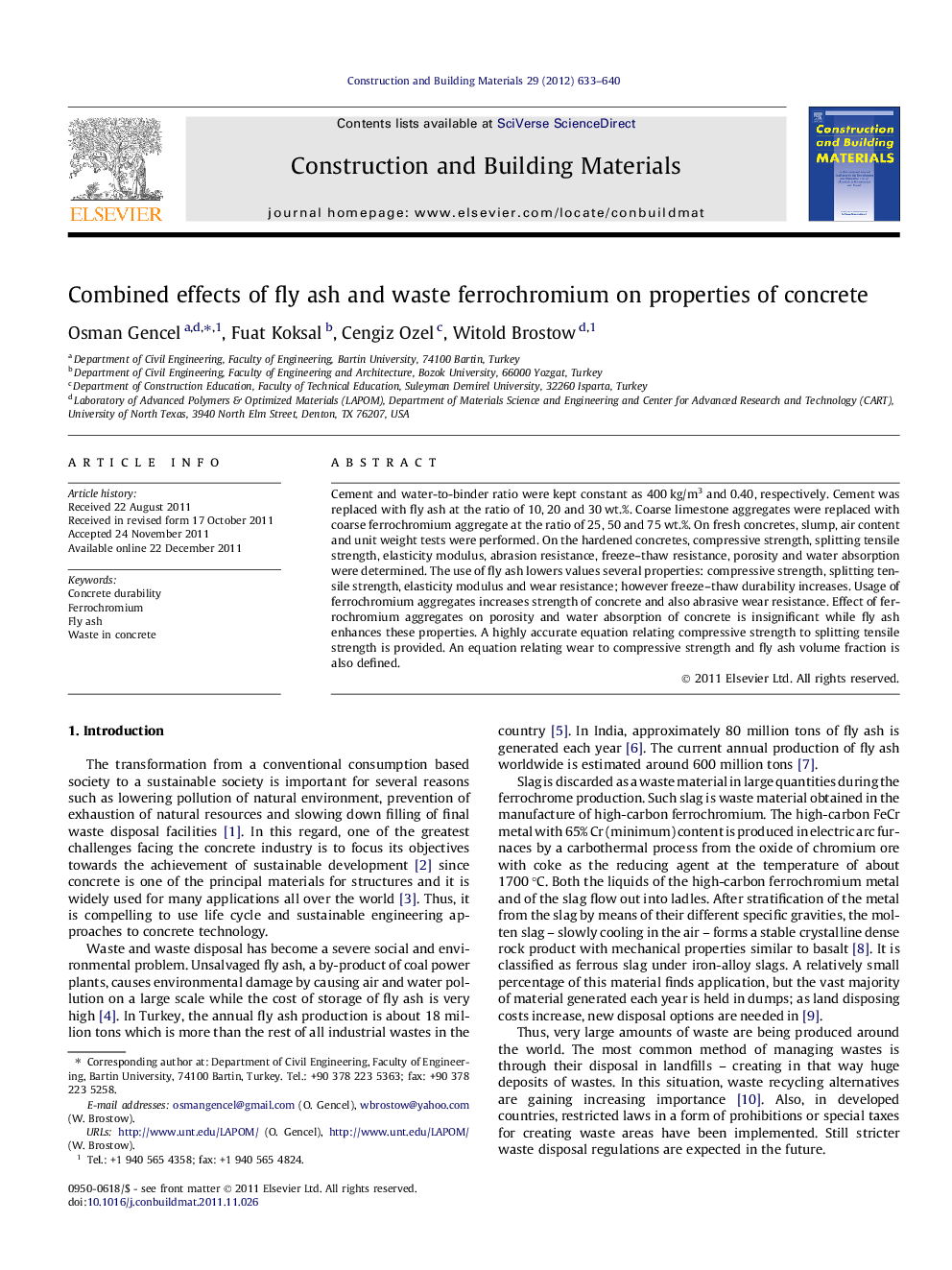| Article ID | Journal | Published Year | Pages | File Type |
|---|---|---|---|---|
| 259114 | Construction and Building Materials | 2012 | 8 Pages |
Cement and water-to-binder ratio were kept constant as 400 kg/m3 and 0.40, respectively. Cement was replaced with fly ash at the ratio of 10, 20 and 30 wt.%. Coarse limestone aggregates were replaced with coarse ferrochromium aggregate at the ratio of 25, 50 and 75 wt.%. On fresh concretes, slump, air content and unit weight tests were performed. On the hardened concretes, compressive strength, splitting tensile strength, elasticity modulus, abrasion resistance, freeze–thaw resistance, porosity and water absorption were determined. The use of fly ash lowers values several properties: compressive strength, splitting tensile strength, elasticity modulus and wear resistance; however freeze–thaw durability increases. Usage of ferrochromium aggregates increases strength of concrete and also abrasive wear resistance. Effect of ferrochromium aggregates on porosity and water absorption of concrete is insignificant while fly ash enhances these properties. A highly accurate equation relating compressive strength to splitting tensile strength is provided. An equation relating wear to compressive strength and fly ash volume fraction is also defined.
▸ We studied the influence of fly ash and ferrochromium wastes in concrete properties. ▸ The wastes have an important effect on properties of concrete. ▸ Fly ash decreases mechanical properties while ferrochromium increases. ▸ Civil engineering construction industry seems capable of absorbing large amounts of waste.
